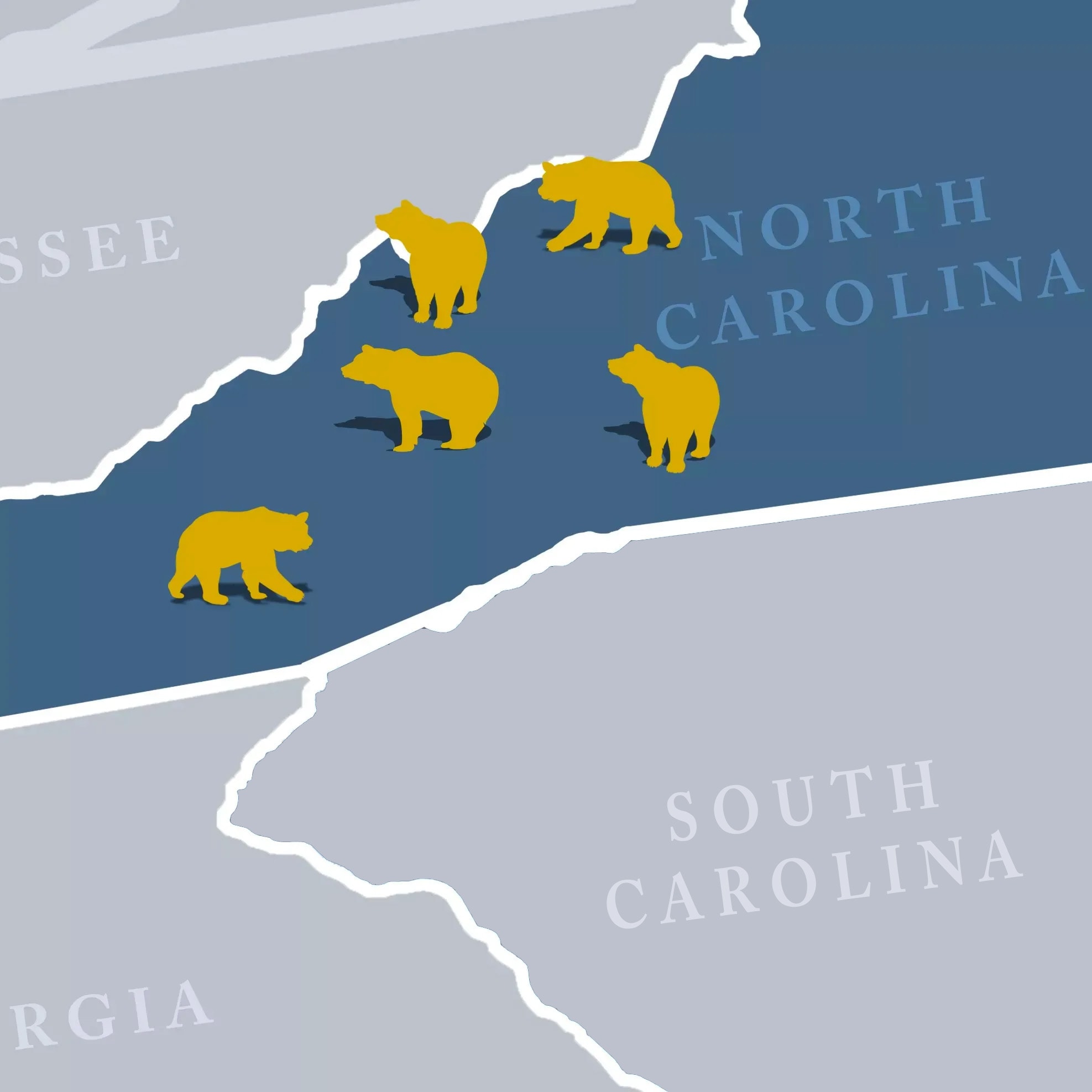In North Carolina, there is a specific set of laws governing the use of motorcycles. If you are an owner or operator of a motorcycle, it is imperative that you understand and abide by these laws.
Generally, every motorcycle owner is granted the same rights and subject to the same duties as any other motor vehicle driver. However, NC has a specific set of laws pertaining to motorcyclists to keep them safe on the road.
This describes the manner in which you should ride a motorcycle under Section 20-146-1.
All motorcycles are entitled to the full use of a lane. No other motorists should deprive the motorcyclist of the full use of a lane.
Motorcycles should not be operated more than two beside one another in a single lane. Autocycles are an exception and should not be operated more than one abreast in a single lane.
Section 20-7 outlines the proper licensing and registration you should have to own and operate a motorcycle.
A motorcycle operator in North Carolina should have either a full provisional license with a motorcycle learner’s permit, a regular driver’s license with a motorcycle learner’s permit, a full provisional license with a motorcycle endorsement, or a regular driver’s license with a motorcycle endorsement.
For those 18 years or older, an endorsement can be obtained after completing a knowledge test that includes questions on motorcycling, as well as an off-street motorcycle skills test, or by completing one of the following:
The North Carolina Motorcycle Safety Education Program Basic Rider Course or Experienced Rider Course
Any course approved by the Commissioner consistent with the instruction provided through the Motorcycle Safety Instruction Program established under G.S. 115D-72
For riders that are at least 16 years old but under 18 years old, an endorsement can be obtained by successful completion of a knowledge test regarding motorcycling and either:
The North Carolina Motorcycle Safety Education Program Basic Rider Course or Experienced Rider Course, or
Any course approved by the Commissioner consistent with the instruction provided through the Motorcycle Safety Instruction Program established under G.S. 115D-72.
When you register your motorcycle with the state, you will receive a license plate to be placed on the back of your motorcycle. It is to be kept clean and readable at all times.
All motorcycle operators and passengers are required to wear a helmet under North Carolina law. This helmet must be compliant with the Federal Motor Vehicle Safety Standard 218.
More specifically, a motorcycle helmet must have:
A firm inner liner of polystyrene foam that is about 1 inch thick
The “DOT” symbol permanently installed by the manufacturer at the back of the helmet
The manufacturer’s label including the name or identification, precise model, size, date of manufacture, type of shell and liner construction materials, and an instruction label for cleaning and care of the helmet permanently attached inside the helmet
Section 20-129 describes the headlamp and rear lamp requirements for a motorcycle.
Every motorcycle must be equipped with:
At least one and no more than two headlamps which must comply with the requirements and limitations outlined in G.S. 20-131 or 20-132. These headlamps must be on at all times while the motorcycle is being operated on highways or public vehicular areas.
Rear lamps or the equivalent that are in good working order. Specifically, the lamps must exhibit a red light that is visible under normal conditions from a distance of 500 feet to the rear of the vehicle. Rear lamps must be on at all times while the motorcycle is being operated on highways or public vehicular areas.
Per Section 20-126, all motorcyclists must use a rearview mirror when operating a motorcycle on all streets and highways.
The rearview mirror must be mounted to provide the operator with a clear, undistorted, and unobstructed view of at least 200 feet behind the motorcycle.
Section 20-140.4 outlines the laws specific to moped and motorcycle riders in North Carolina.
No one shall operate a motorcycle or moped upon a highway or public vehicular area:
When the number of people riding the motorcycle or moped is more than the vehicle is designed to carry.
Without all passengers wearing proper safety helmets.
Those found in violation of this statute will face a fine of twenty-five dollars and fifty cents, along with additional court costs.
If you have any questions about NC’s motorcycle laws, contact our attorneys by calling (800) 951-9482 or by submitting a free case evaluation form on our website. We’ll talk with you for free and answer any questions you have.
As motorcyclists, we understand the unique challenges and hardships riders face after a motorcycle accident. As attorneys, we know the laws governing North Carolina’s motorcycle accident litigation and what it takes to secure justice and compensation on behalf of our clients.
Since 1979 our motorcycle accident attorneys have been helping North Carolina residents after they have been involved in a crash. Let us help you get compensated for your injuries and get your life back on track.
Motorcyclist injured in accident. Details cannot be disclosed due to confidentiality agreement.
Motorcyclist suffered two broken arms after a car turned left in front of the rider.
Motorcycle passenger suffered broken back necessitating multiple surgeries after being struck by a turning RV.
Any result the law firm may have achieved on behalf of one client in one matter does not necessarily indicate similar results can be obtained for other clients.

A motorcycle accident happens in an instant and can be devastating. If you’ve been injured in a motorcycle crash, you need someone who will protect your rights and restore your life. Don’t fall victim to insurance companies’ predatory tactics – instead, speak to the compassionate motorcycle accident lawyers at GTA Law Riders for free.
Contact us today by submitting a form or calling our office at (800) 951-9482 for a free legal consultation.